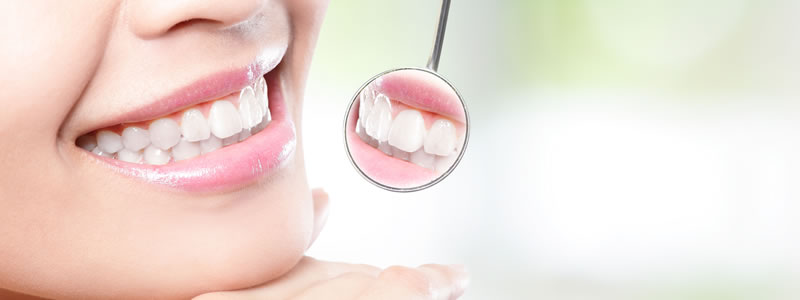Not everyone is fortunate enough to be born with perfect teeth. Even those that are can still damage them through poor hygiene or injury. And plenty of people are in-between, with teeth that are healthy but which they wished looked just that bit better.

Luckily for all of these people there’s cosmetic dentistry. From correcting natural issues to fixing problems, from whitening teeth to fixing chips, cracks, and gaps, there’s a solution for everyone.
Cosmetic dentistry covers all of the following:
Teeth Whitening
Who hasn’t wanted to have their teeth whitened at some point? Even if we take good care of our teeth, they can — and will — stain eventually. Coffee, tea, dark alcohols, and even some foods will eventually start to discolor your teeth over time.
Teeth whitening can be delivered one of two ways — in the dentist’s chair, or at home.
“In-chair” teeth whitening is usually performed in a single session lasting one to two hours. Because it’s in a controlled environment being administered by professionals, it’s usually the stronger of the two options.
“At-home” teeth whitening comes in the form of kits that you can use in the comfort of your own home. They typically work by putting bleaching agent into a tray that you put in your mouth. The bleach whitens your teeth over the course of 20-60 minutes and you take the tray out.
Many dental practices will give at-home whitening kits for patients to use after in-chair whitening to allow them to “top up” the whitening over time.
Veneers
Veneers are thin shells of material, either porcelain or composite resin, which sit over teeth to restore their shape and appearance.
Veneers can be used to treat a impressive range of cosmetic problems, including:
• Chips
• Cracks
• Gaps
• Crooked teeth
• Discolored teeth
Composite resin dental veneers can be bonded directly to your teeth, so you can fix your entire mouth in a single visit to the dentist.
Porcelain veneers need to be manufactured in a lab, so will require two visits.
The trade-off is that porcelain is more durable and will last much longer than the composite resin.
Crowns, Inlays and Onlays
Crowns, inlays, and onlays are similar to veneers, but instead of thin shells they’re much more detailed restorations of specific tooth structures.
Crowns go over chipped and cracked molars. This is not just a cosmetic process, but a restorative one. Using crowns keeps teeth healthy and usable for longer, and prevents teeth breaking altogether.
Inlays are used in the cusp of teeth, the little indents you feel if you run your tongue over your tooth. Onlays instead go over the tips and peaks over the tooth. They’re both useful for restoring the look and function of small areas of a tooth, without resorting to a full crown.
Fast Braces
Fast braces are a growing area of dentistry that allow mild tooth misalignment to be corrected in about six months. These systems use conventional bracket and wire braces, but are planned using computer guidance to ensure they work as efficiently, and quickly, as possible.
Most of these systems are designed to just align the front six teeth and are not intended to reshape a person’s jaw or bite.